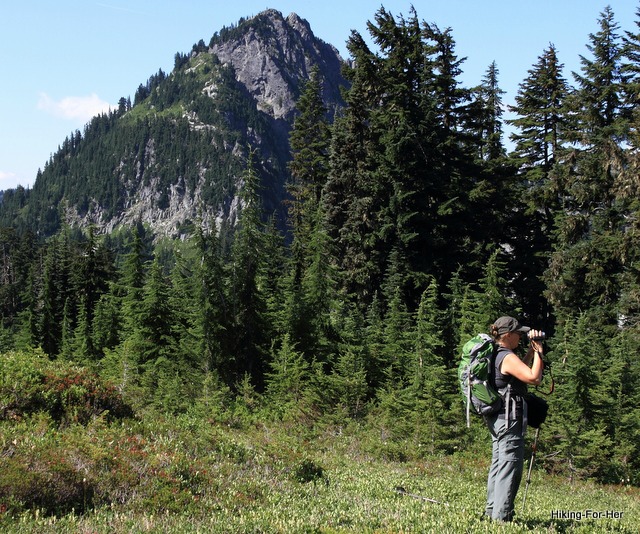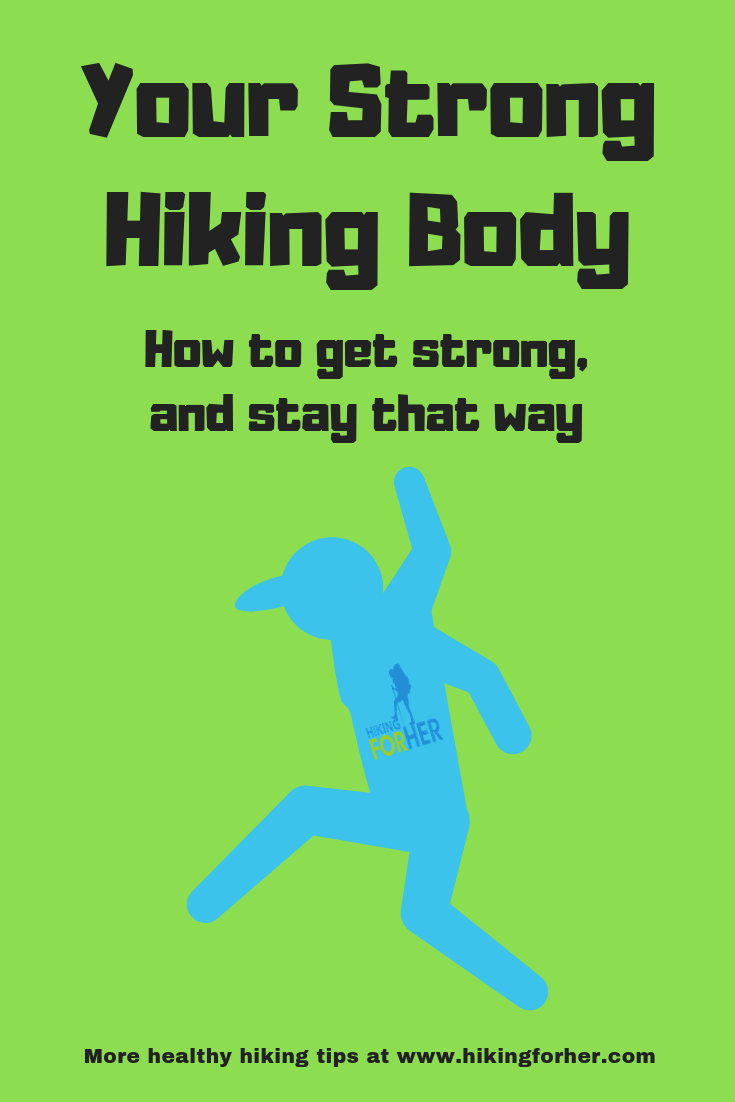
Strong Hiking Bones
And Muscles:
Your Best Hiking Self
By Diane Spicer
Strong hiking bones and muscles are a treasure.
And you built that treasure during childhood and adolescence as you consumed minerals such as calcium and magnesium, and enjoyed vigorous games and sports.
But just like any treasure, it can be depleted, and should be replenished regularly, to keep delivering benefits on the trail.
Answer truthfully
When was the last time you thought about your skeleton?
- Maybe it was near Halloween, and the association between skeletons and being scared made you shiver a bit.
But let's make a different scary association:
losing bone mass as you age, which may lead to fractures or falls on the hiking trail.
- For menopausal women hikers, this topic is very important.
We older hikers want to stay on the trail and have confidence in our ability to hoist packs, navigate safely through all sorts of terrain, and avoid accidents or injury due to weak bones.
So in the interest of strong hiking bodies, let's go over a few bare bones facts for women of any age.
Strong hiking bones:
just the facts
BONES come in a variety of shapes and sizes in your body, based on where they're located and the jobs they must do:
- protection,
- attachment sites for muscles,
- safe resting places for soft tissues such as eyes,
- reservoirs for marrow to replenish blood cells 24/7.
You have 206 bones in your skeleton - a treasure indeed!
You inherited the genetic code for your bones from your parents.
You built bone mass throughout your early years.
And you enjoyed the strength and resilience of your skeleton throughout your youth and child bearing years.
But maybe things are changing in your body now.
- Hormonal levels are fluctuating as you go through pregnancy, mid-life, menopause and beyond.
- Your flexibility and resiliency are decreasing.
- Your diet and activity level may be changing, too.
How are you going to protect your bony treasure?
So glad you asked!
Keys to strong hiking bones
There are two keys to strong hiking bones, and you're probably already aware of both of them:
Nutrition and exercise.
Keeping your bone density high involves a steady supply of particular dietary minerals: calcium, magnesium, and potassium.
- Read more about those here.
Of course, the picture is more complicated.
Vitamins such as vitamin D, for instance, are necessary for bone health.
If you're serious about strong hiking bones, consult a trained nutritionist for a customized diet plan. It's a great investment in your health.
Assuming you hike regularly, you're probably getting lots of weight bearing exercise.
The more you walk with a pack on, the stronger your bones get.
Pretty simple, right?
 Strong hiking bones are the result of carrying a pack!
Strong hiking bones are the result of carrying a pack!For ideas on how to stay strong by selecting the right fuel for your hard working hiking body, try these Hiking For Her approaches:
- trail snacks
- best hiking food
- day hike food
- Vitamin C sources for hikers
- best protein for hikers
- hiking calories
- hiking nutrients
How to avoid
bone problems
Now a few words about avoiding bone problems on the hiking trail.
I'm speaking strictly for myself when I say that I've noticed a definite decline in how limber I feel.
I'm over the age of 50 (way over!), and I no longer wake up after a long cold night in my favorite sleeping bag without feeling my bones creak.
Can you relate?
A few personal
hiking examples
So I'm careful about certain things.
For instance, I make sure that I LOOK before I leap, hop, jump, scramble or descend on the trail.
- I want to know that my footing is solid, and that I have something to grab onto to or use for balance (my hiking poles are always in my hands).
I don't take chances with my feet or legs while crossing streams, talus slopes, or snow fields.
- Again, my poles come in handy as I use them to probe ahead of me.
I'm very cautious, and that means I'm slower than I used to be. And I can live with that.
- Broken bones are going to sideline me from my hiking agenda, so I am going to do everything in my power to avoid that, even if it earns me the nickname "slowpoke".
Pre-emptive moves
for strong hiking bones
Another thing I do is stretch frequently during a hike.
This keeps my joints warmed up but not overly tight as I'm bearing the weight of my pack against gravity.
Mobile joints ensure proper function from the bones, and allow the ligaments and tendons to work smoothly.
Trail tip:
Use your poles to aid your stretches. Hold them behind your neck, hands on either end, and lean back a bit.
Pilates or yoga classes have been known to help with flexibility and core strength, and there are some low cost offerings at local community centers.
- With senior citizen discounts, no less ;)
You might also be eligible for wellness discounts through your health insurer.
An interesting discovery
(although somewhat off topic)
I'm doing Vinyassa flow yoga classes, and have made a lovely discovery: the leggings I wear in the yoga studio are also great for spring and fall cool weather hiking!
- Read my prAna leggings review.
Muscles and bones:
a strong friendship
Keeping muscles strong leads naturally to strong hiking bones.
- As a muscle contracts, it tugs against its bony anchor point, creating normal stress on the bone.
- The bone(s) will remodel and get stronger if the muscular tug increases, which is why working your muscles hard for at least 30 minutes every day pays huge dividends for bones.
Favorite approaches:
- endurance exercises,
- treadmill sessions,
- weight training,
- biking or spin classes,
- swimming,
- vigorous vacuuming and yard work,
- walking uphill with a light pack.
While you might not enjoy working out, you will
enjoy knowing what these approaches do for your bones and muscles: strong, resilient, flexible and trail ready!!
But don't overdo it
Of course, there's can be too much stress in some circumstances, and a bone can bend, twist, or snap.
Younger bones can bend, while older bones don't have that resilience.
Your first aid training as a hiker should include what to do for bone fractures.
- Here are some of the basics.
Commit today to a
strong hiking body
Strong hiking bones and muscles first requires a mental commitment to your beloved sport.
- a daily investment in mindful eating and a decision to spend time exercising.
And the good news for hikers?
By hiking, you're staying strong and healthy!
Every hike you take makes you stronger, building on the work you do off trail in your daily life.
How many other things which you do in the course of a year can deliver those huge benefits in strength and conditioning?
So promise me that you will begin to build and maintain these healthy hiking habits today:
- open wide for those great bone building nutrients,
- carve out some every day for
aerobic movement,
- stretch like a cat at every opportunity, and
- smile when you think of your healthy hiking bones :)
On a roll?
- More healthy hiking tips for you here
Get strong, stay strong!
Home page > Injury Prevention >
Strong Hiking Bones
|
I get emails all the time about what I wear, eat, carry and love to use on the trail. That's
why I provide affiliate links to you: the best gear that I use myself and have seen used by other hikers is instantly
available for your consideration, and the gear company sends a few
pennies per dollar to this reader-supported hiking website. There is no added cost to you! Everyone ends up a winner: Great gear for you, strong gear companies, and more free hiking tips for everyone. Thanks very much for your support. It's warmly and sincerely appreciated. It also helps send these hiking tips to all your virtual trail buddies around the globe. |
 |


